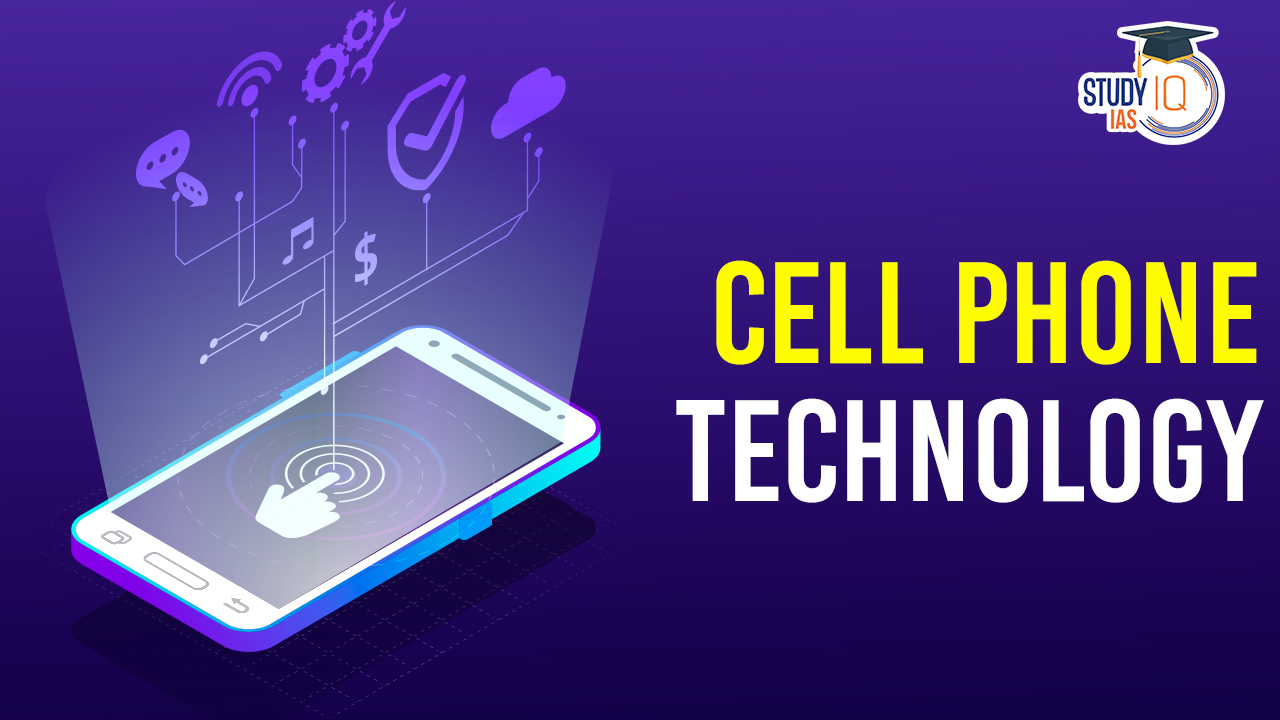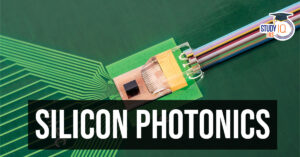Table of Contents
Cell phone technology encompasses a broad category of technologies that facilitate wireless communication via cell-based networks. Over the years, numerous cellular phone technologies have emerged, driven by various vendors and standards organizations. This ongoing evolution is anticipated to persist as these technologies advance and mature.
What is Cell Phone Technology?
Cell phones use a combination of low-powered radio transmitters and receivers (transceivers) to provide voice and data telephone service to mobile users. They include small antennas and work by transmitting information to cellular towers that cover a given area or cell.
Here’s how cell phone technology works:
- A microchip in the phone modulates (or varies) a radio wave using the electrical signal.
- The radio wave travels through the air to a nearby cell tower.
- The tower sends your voice to the person you are calling.
- The process is reversed so that the person on the other end can hear your voice.
- Mobile phones convert voice, text, multi-media messages or data calls into Radio Frequencies (RF). Mobile phone base stations transmit and receive these RF signals and connect callers to other phones and other networks.
The first mobile telephone call was made on April 3, 1973, by Martin Cooper, a Motorola researcher and executive. He placed a call to Dr. Joel S. Engel of Bell Labs, his rival.
We’re now on WhatsApp. Click to Join
Types of Cell Phone Technology
| Generation | Description | Peak Data Speeds | Average Speed Range | Bandwidth/Features |
| 5G | Most advanced, fastest wireless technology | Multi-Gbps | 40 – 1,100 Mbps | High-speed data transmission |
| 2G | Introduced in the 1990s, digital signals | 64 Kbps | N/A | Voice and data support |
| 3G | Launched in the 2000s | 1 – 2 Mbps | N/A | Voice, video calls, conferencing |
| 4G | Typical download speeds: 5 – 180 Mbps | N/A | 1 – 40 Mbps | High-speed data transmission |
| 6G | Promises ultra-low latency, up to 1 Tbps | N/A | N/A | Ultra-fast data transfer |
| GSM | Uses TDMA technology, SIM card identification | N/A | N/A | User account identification |
| Direct-2-Mobile | Access multimedia content without using mobile data | N/A | N/A | Video on Demand (VoD), OTT content |
1G (First Generation)
1G was the earliest cell phone technology, introduced in the 1980s. It primarily supported analog voice calls, offering limited coverage and call quality. 1G networks used analog modulation techniques, making them less efficient than their digital successors. These early cell phones were large and lacked features like text messaging and data services.
2G (Second Generation)
2G represented a significant advancement over 1G. It introduced digital voice communication, which improved call quality and made more efficient use of the spectrum. Additionally, 2G networks introduced text messaging, known as Short Message Service (SMS). Two prominent 2G technologies were GSM (Global System for Mobile Communications) and CDMA (Code Division Multiple Access).
3G (Third Generation)
3G brought further improvements by expanding data capabilities. It enabled mobile internet access, video calling, and multimedia services. Common 3G technologies included UMTS (Universal Mobile Telecommunications System) and CDMA2000. 3G networks made it possible to access email, browse the web, and enjoy multimedia content on mobile devices.
4G (Fourth Generation)
4G marked a significant leap in data speeds and capabilities. It allowed for high-quality video streaming, faster internet access, and more reliable connections. LTE (Long-Term Evolution) is one of the key 4G technologies. With 4G, the smartphone became a versatile device capable of handling demanding applications, and it paved the way for the mobile data-driven world we live in today.
5G (Fifth Generation)
5G is the latest and most advanced cellular technology. It promises ultra-fast data speeds, low latency, and the ability to connect a massive number of devices simultaneously. 5G enables technologies like IoT (Internet of Things) and plays a crucial role in the development of autonomous vehicles, augmented reality, and virtual reality applications. It has the potential to revolutionize industries beyond mobile communications.
Satellite Phones
Satellite phones operate by connecting to satellites orbiting the Earth. They are vital in remote areas where traditional cell towers are absent. These phones provide global coverage and are used by professionals, explorers, and emergency responders.
VoIP Phones
VoIP (Voice over Internet Protocol) phones use the internet to make voice calls. They are known for their cost-effectiveness and flexibility. Services like Skype and WhatsApp are popular examples of VoIP calling applications.
Dual-SIM Phones
Dual-SIM phones allow users to use two SIM cards in a single device. This feature is beneficial for those who want to separate personal and business communications or take advantage of different carriers for cost savings.
Foldable Phones
Foldable phones are a recent innovation. They feature flexible screens that can be folded to create a compact form or unfolded for a larger display. This design offers versatility and a unique user experience.
Feature Phones
Feature phones are basic mobile devices that are primarily used for voice calls and text messaging. They are known for their simplicity and long battery life. They lack the advanced features of smartphones.
Smartphones
Smartphones are advanced mobile devices with extensive computing capabilities. They can run a wide range of applications, offer high-resolution displays, support advanced cameras, and provide access to a vast ecosystem of mobile apps. Operating systems like Android and iOS power most smartphones.
Rugged Phones
Rugged phones are designed to withstand harsh environments, making them suitable for outdoor and industrial use. They are built to be water-resistant, dustproof, and capable of surviving extreme conditions, making them ideal for professions like construction, fieldwork, and military use.
5G Technology
The 5G networks are designed to operate within the millimeter wave spectrum, which encompasses frequencies ranging from 30 to 300 GHz. This spectrum offers a significant advantage by facilitating the transmission of large volumes of data at incredibly high speeds. The high frequency of millimeter waves minimizes interference from neighboring signals, enhancing overall performance.
5G represents the latest evolution of mobile broadband networks, building upon the foundations of LTE (Long-Term Evolution).
In terms of internet speed, the high-band spectrum of 5G has demonstrated remarkable capabilities, with tests showcasing speeds reaching up to 20 Gbps (gigabits per second). This stands in stark contrast to 4G’s maximum data speed of 1 Gbps. 5G networks are expected to achieve a peak data rate of 20 Gbps for the downlink and 10 Gbps for the uplink.
5G operates across three primary frequency bands, each with its unique applications and limitations:
- Low band spectrum: This band excels in terms of coverage and internet speed, though its maximum speed is capped at 100 Mbps (Megabits per second).
- Mid-band spectrum: While it offers higher speeds compared to the low band, it has limitations in coverage area and signal penetration.
- High-band spectrum: This band boasts the highest speeds among the three, but it suffers from extremely limited coverage and signal penetration capabilities.
5G’s versatility is evident in a wide range of applications, including high-speed mobile networks, entertainment and multimedia, Internet of Things (IoT) connectivity, smart cities, smart farming, telemedicine services, control of critical infrastructure and vehicles, and industrial applications.
VoLTE vs VoWiFi vs VoNR
| Feature | VoLTE (Voice over LTE) | VoWiFi (Voice over Wi-Fi) | VoNR (Voice over New Radio) |
| Network Type | Cellular (4G LTE) | Wi-Fi (Internet) | Cellular (5G NR) |
| Network Support | LTE networks | Wi-Fi networks | 5G NR networks |
| Quality | High-quality voice | Quality depends on Wi-Fi signal | High-quality voice |
| Data Usage | Uses mobile data | Uses Wi-Fi network | Uses 5G data or Wi-Fi |
| Availability | Limited to LTE coverage areas | Available where Wi-Fi is present | Limited to 5G coverage areas |
| Handover Support | Seamless handover between LTE and Wi-Fi | Seamless handover between Wi-Fi and cellular | Seamless handover between 5G NR and Wi-Fi |
| Latency | Typically lower latency than VoWiFi | Can have variable latency depending on Wi-Fi quality | Low latency due to 5G NR |
| Battery Efficiency | May have a moderate impact on battery life | Typically more battery-efficient when using Wi-Fi | Battery-efficient on 5G NR |
| Supported Devices | Requires VoLTE-enabled devices | Compatible with Wi-Fi-enabled devices | Requires VoNR-enabled devices |
| Deployment Stage | Deployed in 4G LTE networks | Available on most Wi-Fi networks | Part of 5G NR rollout |
| Service Providers | Offered by cellular carriers | Supported by various communication apps | Supported by 5G carriers |
6G Technology
6G technology is expected to facilitate the widespread adoption of 5G use cases, particularly in the enterprise sector, by introducing optimizations and cost reductions. For instance, the metaverse, a significant 5G use case, has the potential to reshape both conventional and digital environments.
With the advent of 6G, the metaverse is poised to undergo a transformative evolution, potentially achieving a seamless integration with the physical world, thanks to the integration of artificial intelligence and machine learning.
India is actively planning to introduce 6G services using domestically developed infrastructure, with a target launch date around the end of 2023 or early 2024.
Future of Cell Phone Technology
- Flexible and Foldable Phones: Phones are likely to become more flexible, allowing for bending and folding.
- Holographic Projection: Phones may gain the ability to project holographic images.
- AI Integration: Deeper integration of AI into devices for enhanced personalization and user assistance.
- Voice Features: Expect more conversational and chatty voice features on phones.
- AI-Generated Nonsense Blocking: Phones could incorporate technology to recognize and block AI-generated spam.
- 5G and 6G Connectivity: Phones will support 5G and 6G connectivity for faster and more reliable data transfer.
- Augmented and Virtual Reality: Phones will offer immersive experiences through augmented and virtual reality.
- Brighter and Flexible Screens: Screens will be brighter and more adaptable, potentially folding in different ways.
- Smarter Digital Assistants: Digital assistants will become more intelligent and capable.
- Wireless Charging: Phones may eliminate physical ports and rely on wireless charging.
Additional Predictions:
- Photonic Crystal Displays
- Nano-Tech Batteries
- Liquid Buttons
- Headphone Surround Sound
- Biometric Authentication
- Graphene
- No SIM Cards
Cell Phone Technology UPSC
Cell phone technology has evolved significantly, from 1G analog networks to the cutting-edge 5G. It employs radio transceivers for wireless communication through cellular towers. 6G is on the horizon, promising ultra-fast data transfers. In addition to cellular networks, other technologies like VoIP, satellite phones, and dual-SIM phones offer diverse communication options. The future of cell phones holds foldable designs, holographic projections, advanced AI integration, chatty voice features, and enhanced spam blocking. 5G and 6G connectivity will enable faster data transfer, while augmented reality, brighter screens, and smarter digital assistants will provide immersive experiences. Additionally, wireless charging and innovative materials are shaping the future landscape.


 AI and its Regulation in India, Limitati...
AI and its Regulation in India, Limitati...
 Tuberculosis (TB), Symptoms, Causes and ...
Tuberculosis (TB), Symptoms, Causes and ...
 Silicon Photonics Enables Low-power AI A...
Silicon Photonics Enables Low-power AI A...





















